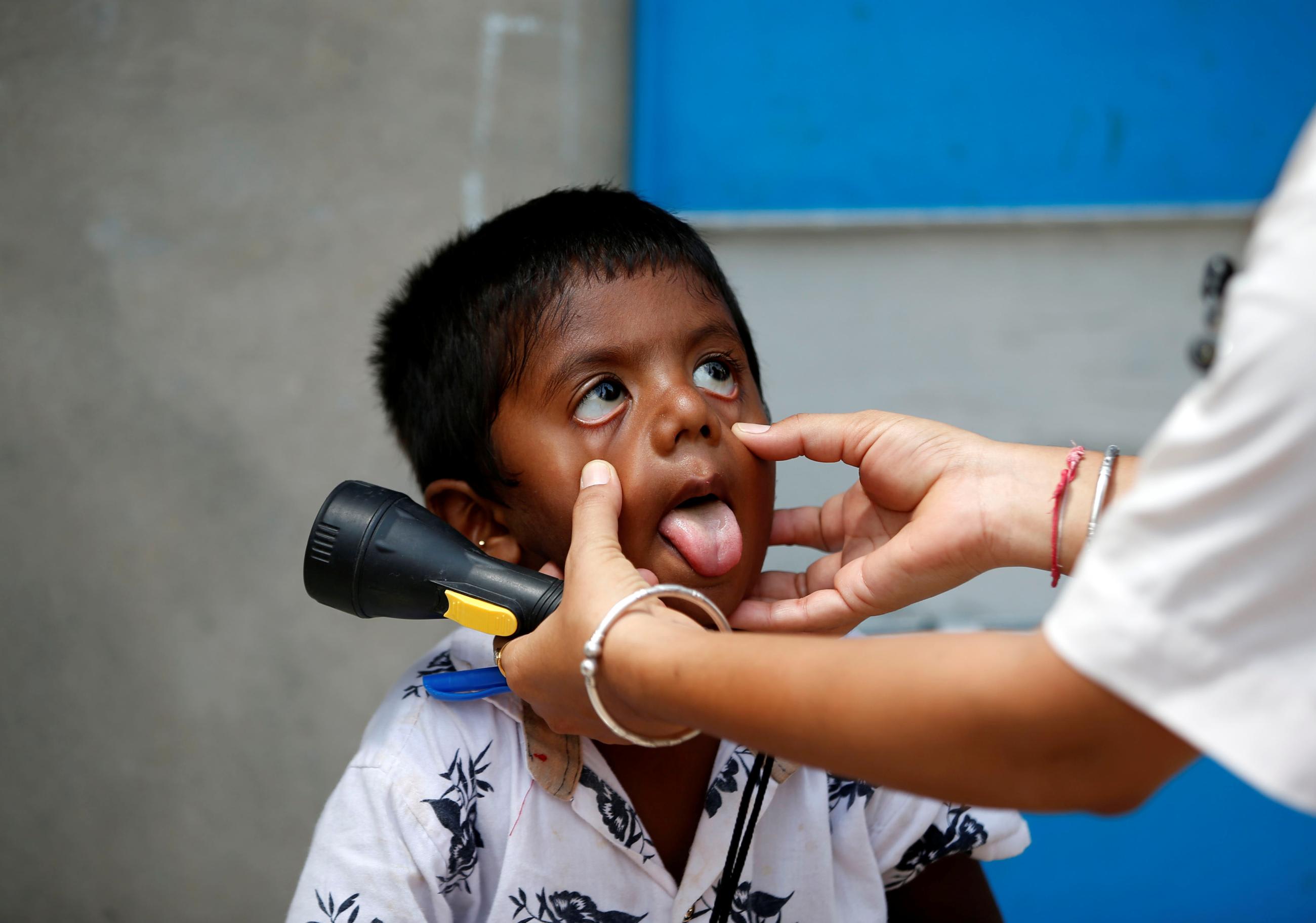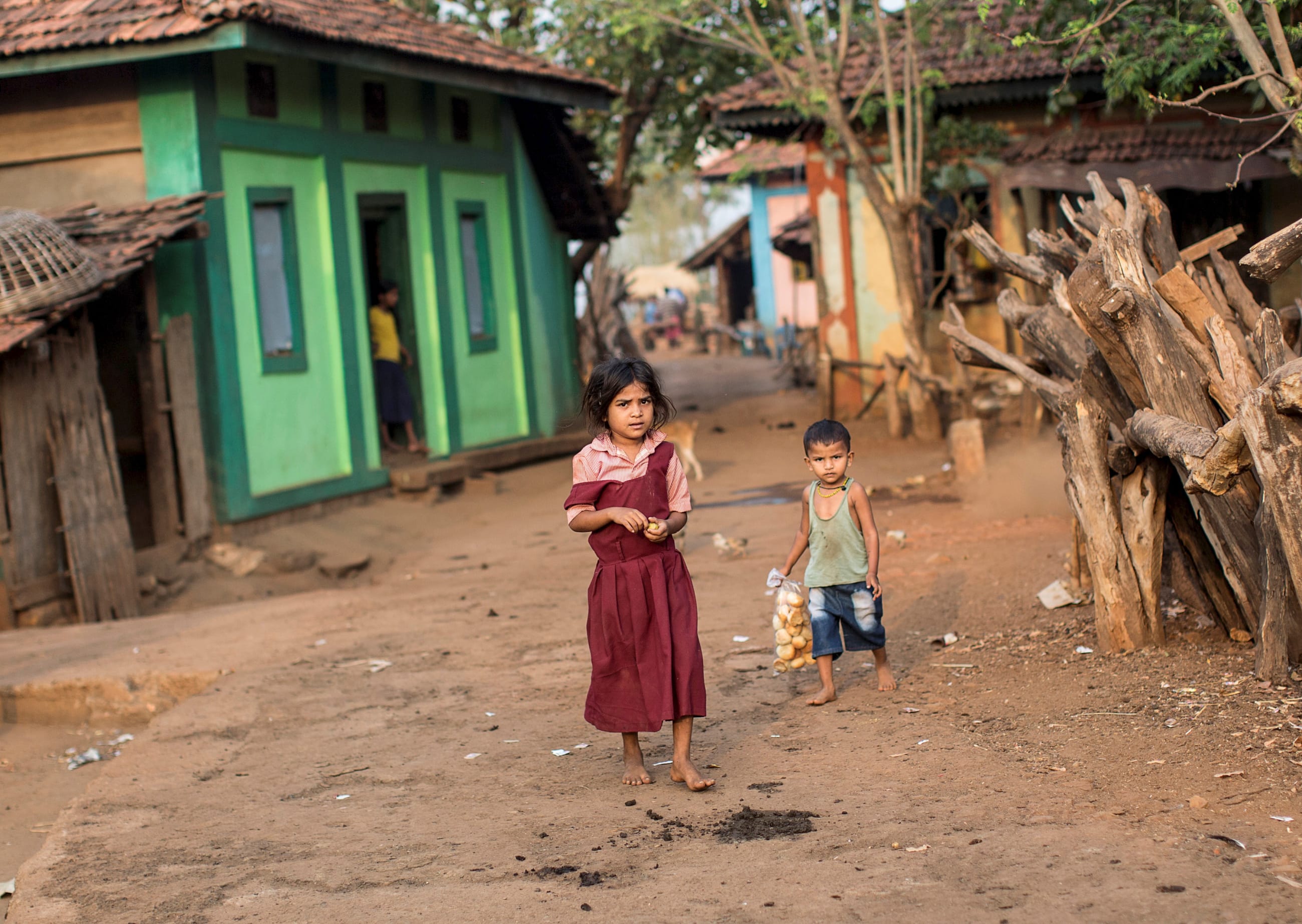When reports say that India has an "under-5 mortality rate of 31 per 1,000 live births," the number fails to present the grotesque reality. An alternative picture would imagine a 250-seater airplane full of innocent babies and children. The plane crashes and not a single kid survives. In India, more than 3,000 such planes crash every year—eight every day.
Child mortality—especially in the neonatal and infancy stages—is considered one of the most sensitive readouts of a country's health system, developmental infrastructure, and political economy. The topic has been high on policy and political agendas for several decades.
The United Nations' Millennium and the Sustainable Development Goals (MDGs and SDGs) aim to reduce under-5 mortality rates to 42 (India-specific) and 25 (global) per 1,000 live births, respectively. Even though India has achieved the MDG target for under-5 mortality through health care and social improvements, maintaining and accelerating this momentum are critical to achieve this SDG target for the 2030 deadline. The India Newborn Action Plan (INAP) aspires to achieve a single-digit neonatal mortality rate by this time—a more ambitious objective than the SDG target of 12 neonatal deaths per 1,000 births.
Yet neonatal mortality forecasting based on current trends shows that neither INAP nor SDG targets are expected to be achieved by 2030. Something more should be done.
When people consider child mortality, they tend to focus on conditions that can be treated with medicine, such as infections and diarrhea.
But there is another avenue to reduce child mortality—pediatric surgery.
Where India Needs Pediatric Surgeons
The changing trends in the disease burden and upcoming priorities need focusing on pediatric surgery. Although under-5 mortality rate has dropped in recent decades, the share of deaths due to congenital conditions requiring surgical interventions in this group has increased.
Child mortality is one of the most sensitive readouts of a country's health system
Globally, 1.7 billion children lack access to care for surgically treatable conditions—such as appendicitis, cancers, and congenital abnormalities including cleft lip and palate. This number is especially alarming in low- and lower-middle-income countries (LLMICs), where the pediatric populations make up a large chunk of the total population. It is estimated that 396 million children under the age of five in LLMICs lack timely access to safe and affordable essential surgical care. Emergency and essential surgical care is an essential step in achieving universal health coverage—another SDG target.
Pediatric surgery deals with a range of conditions at different stages of a child's development, from infancy to early adolescence. Advancements in better understanding of childhood physiology, combined with better availability of antibiotics and surgical material have now improved the surgical success rates in India from 20% to 30% in the 1960s to 90% today. Access to timely surgical care can ameliorate suffering children and their families, but such procedures raise many barriers.
At least three of these barriers merit attention sooner rather than later: the availability and distribution of a trained surgical workforce, affordability of care, and effective policy focus.
The imperative step in achieving comprehensive pediatric care is to have enough pediatric surgeons spread across the country who can perform essential and complex surgeries. A recent analysis shows that a density of 3.7 pediatric surgeons per million children (under 15) not only increases the chances for better surgical outcomes but also improves neonatal, infant, and under-5 survival.

In 2023 in India, that would translate to 1,246 pediatric surgeons to cover its population of approximately 336,906,000 children under the age of 15. India had 1,600 pediatric surgeons as of two years ago and thus meets this minimum threshold. However, it is critical to note that this is only a minimum. Continued influx of trainees is vital to maintaining this number. As of 2023, India has 236 specialty training spots for pediatric surgery subspecialty training across 77 teaching hospitals. These seats are not always filled. Vacancies for pediatric surgery can range from 19% to 75%.
It is also important to contextualize these numbers against the disease burden. The contribution of congenital conditions to all under-5 deaths rose from 4.3% in 1990 to 7.9% in 2019. This means that to truly lower the under-5 mortality, India needs more pediatric surgeons than ever. Studies have shown that surgeons with subspecialty training or more experience working with children had better outcomes including lower negative pediatric appendectomy rates and lower complication rates than general surgeons commonly treating adult patients. The limited evidence in LLMICs points to generally better postoperative outcomes among children when cared for by pediatric surgeons than by adult-treating surgeons. The Indian Association of Pediatric Surgeons also advocates that "a child is not a miniature adult" and pushes for the scale-up of pediatric surgical workforce density.
Beyond adequacy, more stark issue is the inequitable distributing of workforce burdening the rural areas. The majority of India's population—64%—reside in rural areas. Most rural dwellers have to travel long distances when in need of surgical care. The shortage of specialist doctors is higher than 80% at the community health centers level, which is supposed to provide basic surgical care.
More broadly, rural patients in LLMICs usually show an advanced disease profile across multiple conditions due to the delayed presentation at hospitals and clinics. Long preoperative wait times have also been observed for pediatric cases in rural India, increasing the risk of more complications and even fatality. Hence addressing the shortage of surgeons at community health centers emerges as the pivotal strategy to mitigate morbidity associated with essential and emergency surgeries.
The shortage of specialist doctors is higher than 80% at the community health centers level
Enticing Rural Surgeons
One of the reasons for the lack of pediatric surgeons in rural areas is that those jobs do not appeal to many specialty physicians, who have more opportunities in urban areas. Promoting regular rotation between rural and nonrural postings of doctors could be one solution to that problem
The second barrier is the cost of care. The Ayushman Bharat-Pradhan Mantri Jan Arogya Yojana (PMJAY) in India, which aims to improve access to inexpensive and quality health care, mentioned only 35 insurance packages under pediatric surgery of the 1,393 available options in the 2018 list. Certain emergency procedures such as appendectomy, were listed under general surgery.
In 2021, surgery and follow-up care for birth defects during infancy were not included in insurance schemes, increasing families' out-of-pocket expenditures. The new 2022 care package list expanded pediatric surgery and restructured packages to have cross-specialty coverage. This ensured that appendectomy was listed under general and pediatric surgery, making it easier to provide benefits for children.
However, further pediatric surgical care expansion is necessary. Trauma surgeries are still not listed under pediatric surgery in the current PMJAY package list. This is stark given that road traffic crashes were the topmost cause of death among Indian youth, including adolescents.

It is critical that investing in pediatric surgery is not cost prohibitive. A systematic review focusing on LLMICs noted cost-effectiveness ratios of $15 for inguinal hernia repair, $29 for cleft lip or palate repair, and $36 for appendectomy procedures, relative to the World Bank's LLMIC threshold of $50 to determine highly cost-effective interventions. Further, these ratios also compare favorably against common public health interventions, such as Bacillus Calmette–Guérin vaccination for tuberculosis or antiretroviral therapies for HIV-AIDS, that India currently invests in.
Limited policy focus is the third barrier at the highest level that arguably gives rise to all other barriers. It is often argued that surgery is the neglected stepchild in global public health, but pediatric surgery is even more neglected in health policymaking. Analysis of national health policies, strategies, and plans from 128 countries found that even though almost all documents discussed child health as a priority, only 7% even mentioned children's surgery.
In National Surgical, Obstetric, and Anesthesia Plans, the first policy step toward solving surgical care access issues, pediatric surgery is either lost or coupled with adult surgery and the unique needs of children requiring surgical care are not documented. In India, a comprehensive policy analysis of about 40 national documents published over the last 70 years in India included only six mentions of pediatric surgery, testament to the acute neglect toward this area.
Confronting the barriers to pediatric surgical care access can avert thousands—if not millions—of childhood deaths and the associated societal suffering.













